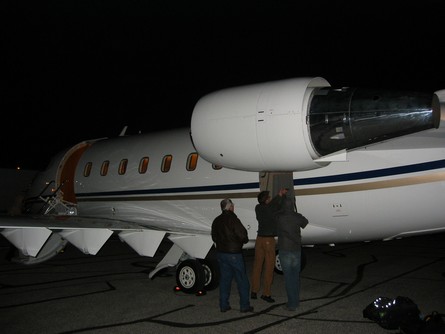Business aviation came to the aid of NASA’s Hubble Space Telescope on 16 December when Ball Aerospace, provider of a visible and ultra-violet sensor scheduled to be installed on the earth-orbiting observatory next summer, used a Bombardier Challenger 604 to deliver a reworked detector from Boulder, Colorado to NASA's Goddard Space Flight Centre near Washington DC.
The detector is a key element of the Wide Field Camera-3 (WFC3) instrument, a refrigerator-sized module that will replace the Wide-Field Planetary Camera-2 that has been flying on the Hubble since 1993. Hubble scientists say the WFC3 will provide unprecedented insight into the cosmos, peering farther back in time than possible with the present camera, the source of most of the images that have made the telescope famous.
The detector had previously been shipped to NASA by truck, but technicians found a short-circuit on the device during its installation in the WFC3, threatening the start of systems-level tests required to meet the August 2008 Space Shuttle launch date for the final Hubble servicing mission. The fault was ultimately attributed to insufficient electrical isolation on Ball’s part -- an issue that had occurred once before with this particular detector -- and the device was once again trucked back to Boulder.
After the rework, the company opted for the 3h lift on Ball's corporate jet to save the 36 hours it would take to truck the device back to the east coast once again.

Sensor is unloaded from Ball's Challenger at Baltimore-Washington airport
Source: FlightGlobal.com
















